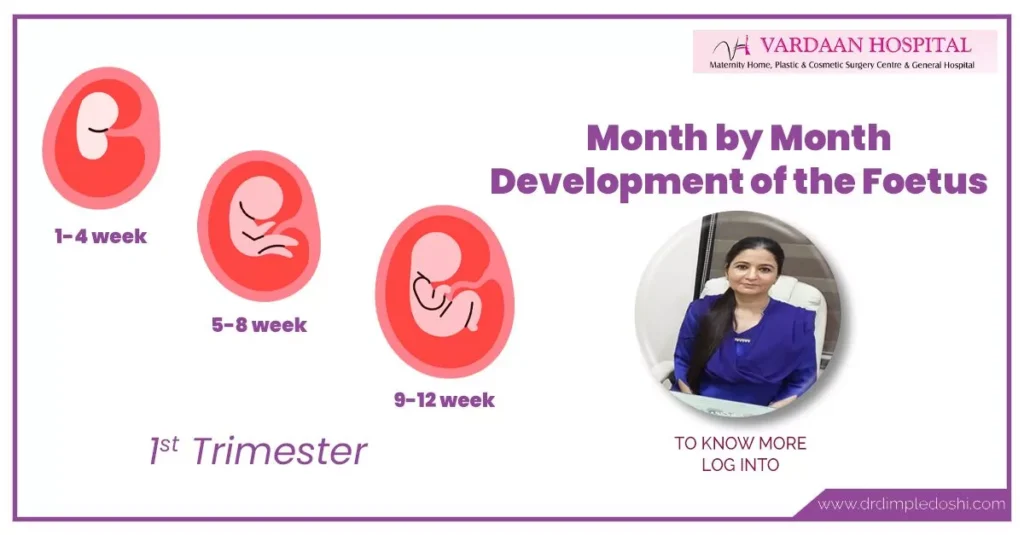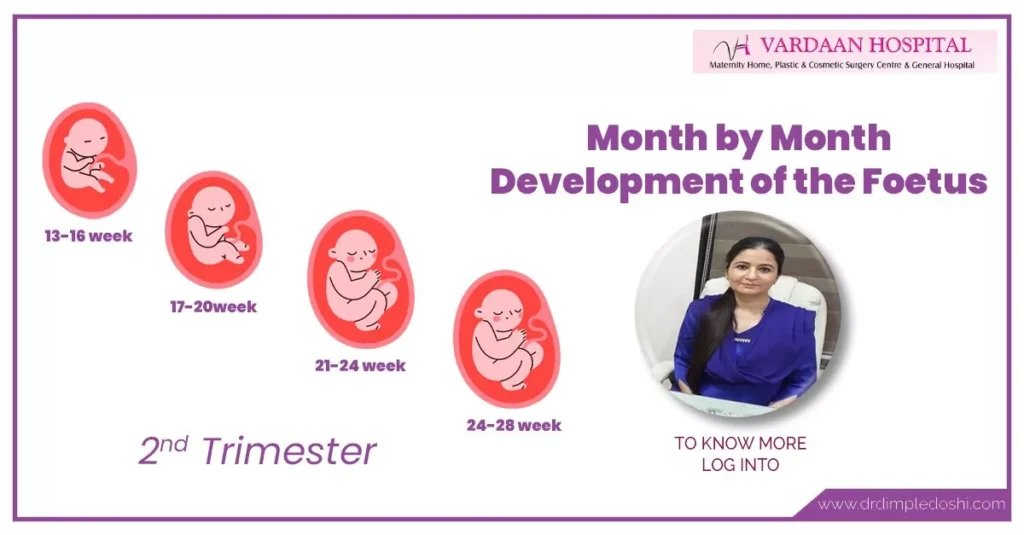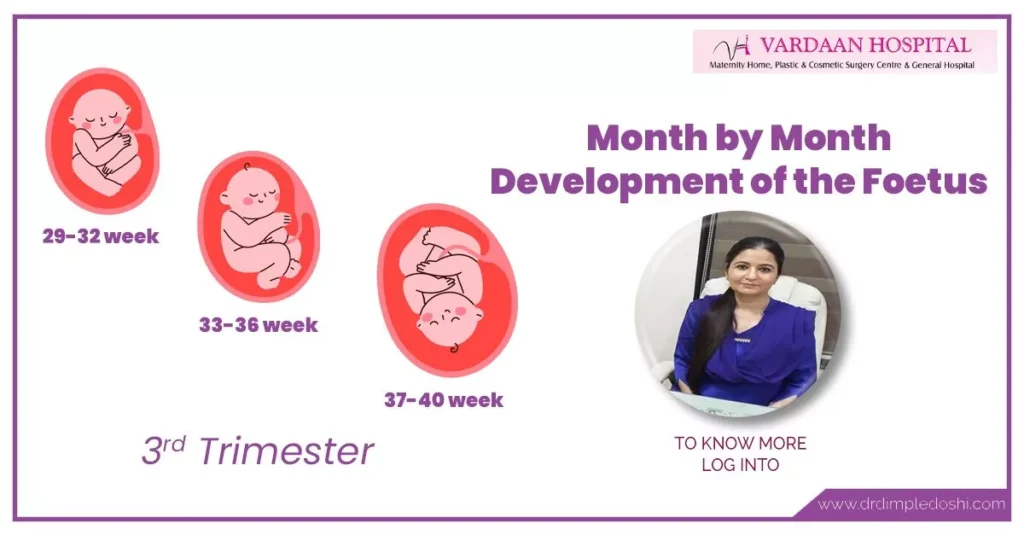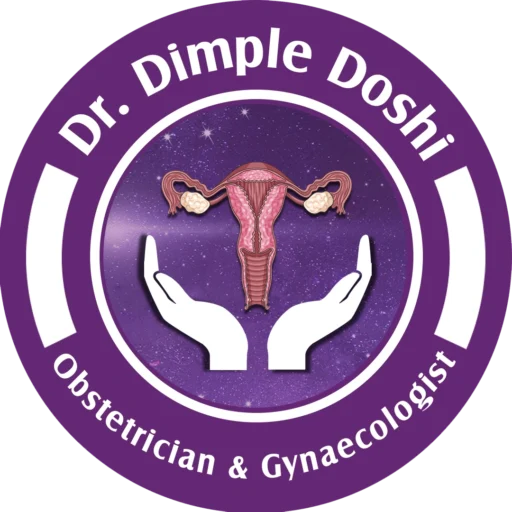Expert Normal Pregnancy Care in Goregaon West, Mumbai
Pregnancy lasts about 41 weeks; and the counting is done from the day when your last normal menstrual period started.
A trimester of pregnancy is a period of 3 months and your body changes surprisingly during the span of pregnancy.
This is how pregnancy can make your body can change to make you a new you.
First Trimester
The hormonal changes happening due to pregnancy start showing up as soon as the pregnancy is diagnosed.

- The period stops; and this is the first sign of pregnancy.
- You may feel extremely tired.
- Breasts start getting swollen and become tender. Nipples may stick out.
- Mood swings; feeling of satisfaction and security; irritability; feeling depressive and dull at times.
- You may crave for foods which you used to not like before your pregnancy and will develop distaste for the foods that you loved the most when you were not pregnant.
- Headache
- Nausea and vomiting
- Feeling of sickness
- Heartburn
- Need to pass urine often.
- Weight gain should ideally happen but weight loss can be normal. When the morning sickness is severe and you are unable to eat normally and are persistently pukish.
- Constipation
Some women are fortunate enough to not have any discomfort at all! But this is rare. In most of the women; the first trimester can give a tough time due to the range of symptoms; but all these symptoms roughly indicate that the baby is growing normally.
So whenever this happens; it’s the time to celebrate these symptoms. Accept that these are the normal signals your baby is giving to u saying that it is alright.
And as your body changes; you need to make some changes in your daily routine; like going to bed earlier; taking small frequent meals; avoiding alcohol and smoking.
Second Trimester
The second trimester is easier than first and you may notice that the earlier discomfort;nausea and vomiting are gone.

- Your abdomen will start expanding as the baby starts growing.
- In the middle of this trimester , you may notice that the baby has started moving. This is called quickening.
- Body ache; back pain; pain in abdomen; thighs or groin may happen due to stretching of ligaments; joints and nerves.
- Stretch marks may start developing on your abdomen; breasts; thighs and buttocks. And this is the time when your gynaecologist will explain you different ways of preventing the stretch marks; though they are not 100% preventable.
- Darkening of the skin around the nipplesmay happen.
- A black line running from belly button to pubic hairline may start developing.
- Patches of dark skin may develop on cheeks; forehead; nose or upper lip; also called melasma; a mask of pregnancy.
- Tingling and numbness in hands; due to something called carpal tunnel syndrome.
- Itching on palms; and soles of feet may be considered normal but if too severe; your doctor may advice liver function tests.
- Swelling on ankles; fingers and face may be considered normal if your doctor says so. Because they may indicate low hemoglobin and protein levels; hypothyroidism; or pregnancy induced hypertension.
- Bleeding from gums may happen but it can lead to dental infections. So oral hygiene is very important.
- Your hair may become thicker and healthy under the influence of estrogen
- Pregnancy glow may start appearing in the second trimester as now the blood circulation to the face improves and nausea; vomiting and loss of appetite of first trimester are gone.
Third Trimester
The discomforts you experienced in the second trimester may continue as the baby is getting bigger and trying to engage or come down in the pelvis. This can lead to lower abdominal discomfort.

- You may experience shortness of breath due to blood dilution.
- Heartburn
- Swelling on ankles; face and fingers that you developed in the second trimester may continue. Do mention it to your doctor to confirm that it is normal and not related to the problems like low hemoglobin and hypertension.
- Piles
- Breast swelling and tenderness. Some women may start having milk discharge which could be normal but you must inform your doctor about it as it may indicate uteroplacental insufficiency which can lead to low oxygen levels in the baby.
- Your belly button may stick out.
- You may experience trouble sleeping .
- As the baby gets engaged in the pelvis or fixes there; you may experience lower abdominal discomfort which is not to be suppressed by any pain killers; as your body is preparing for the labor.
- Contractions may start; not associated with pain; and they are called Braxton Hicks contractions.
As you near your due date; your doctor will check your progress with a vaginal exam.
True Labor Pains
The onset of labor pains may be different for different women. Some of the commonly happening symptoms are:
- Intermittent lower abdominal pain associated with uterine contractions.
- Sudden gush of watery discharge
- Backache
- Spotting or bleeding PV
- Appearance of thick discharge; please keep a check on the color of your vaginal discharge. If yellow or green; you have to rush to the hospital immediately.

